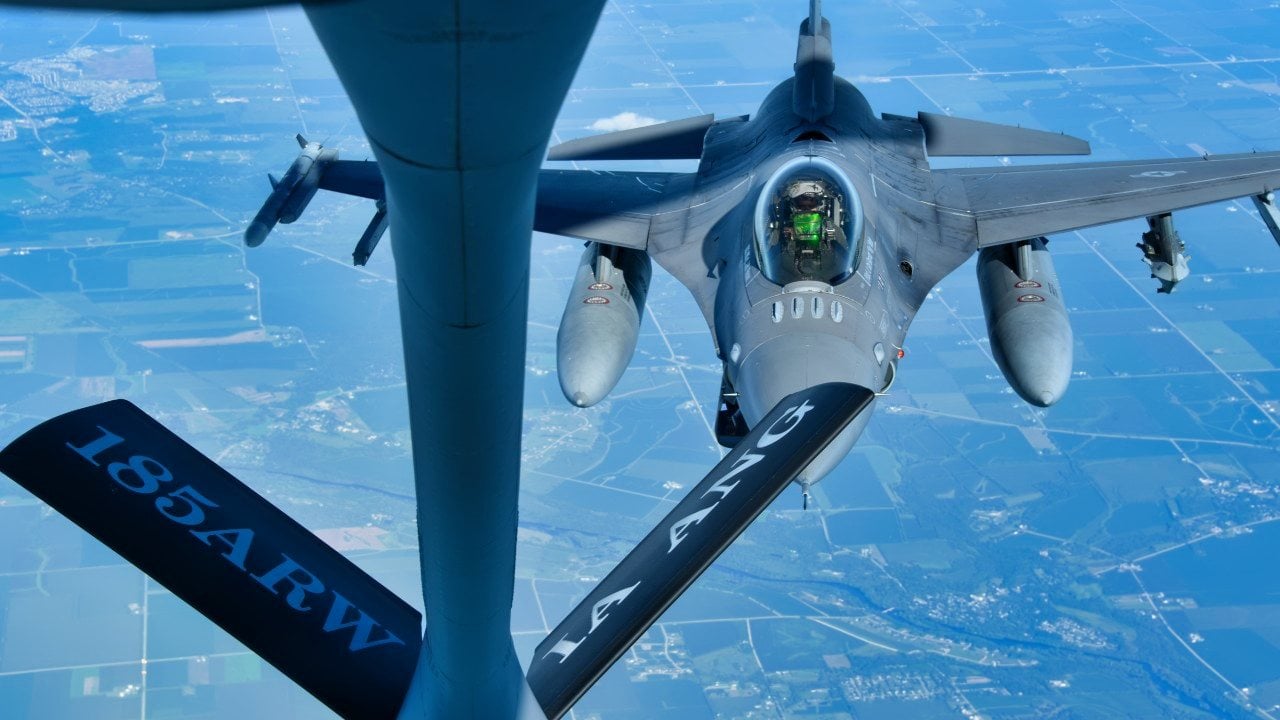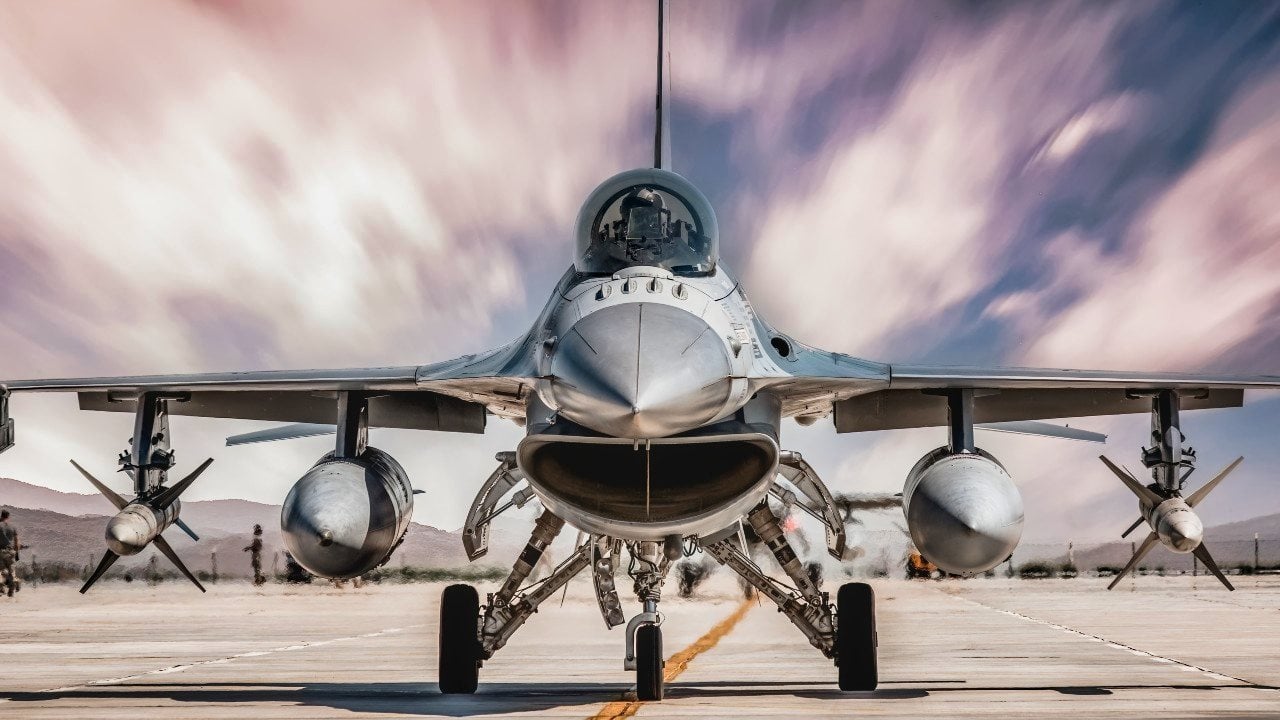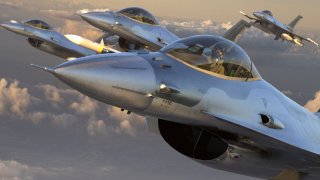Would Taiwan's F-16 Fighters Stop China in a War?
Taiwan is upgrading 139 older F-16s to the Block 70/72 Viper variant under the $4.5 billion Peace Phoenix Rising program to bolster defenses against potential Chinese aggression.
Summary and Key Points: Taiwan is upgrading 139 older F-16s to the Block 70/72 Viper variant under the $4.5 billion Peace Phoenix Rising program to bolster defenses against potential Chinese aggression.

-While these upgrades enhance Taiwan's air capabilities, critics argue that resources could be better spent on asymmetrical warfare tools like drones, anti-ship and anti-aircraft missile defense systems, and unmanned underwater vehicles.
-As Taiwan's fleet of aging warplanes nears the end of their service lives, the investment in F-16s, though technologically impressive, may not provide the strategic advantage needed against a much larger Chinese military.
Taiwan’s F-16 is a Game-Changer?
Taiwan is preparing for the eventuality that China will soon invade and/or blockade their country. To defend against the possibility, Taipei has invested significantly into upgrading their existing fleet of F-16 Fighting Falcons.
Under the auspices of the Peace Phoenix Rising program, and at a cost of $4.5 billion, Taiwan is upgrading 139 older versions of the F-16 to the Block 70/72 Viper variant. This is all part of Taiwan’s rapid modernization and expansion of its military, as the island prepares China to take some form of aggressive action against their island.
Having a modern and potent fleet of warplanes at its disposal, Taipei believes, will help counteract China’s growing threat. Indeed, it will help. But the greater question is whether this expensive move is the best possible use of resources?
Likely not.
Already, experts have pointed out the need for Taiwan to use its limited size to its advantage. Rather than building out a sophisticated, modern military, the Taiwanese government should exploit whatever asymmetrical advantages it can. Let’s get real, here, no matter what level of investment Taiwan makes into upgrading its F-16 fleet, the likelihood that these systems would tilt any Sino-Taiwanese conflict in the latter’s favor is unlikely.

China is simply too big when compared to Taiwan.
What is Taiwan Thinking?
Eventually, Taiwan will simply run out of F-16s – and areas to launch and recover those F-16s. Would not a better investment for Taiwan be in the much cheaper unmanned aerial vehicle system? Create an arsenal of drones that can swarm enemy warships and planes. Building these systems would be cheaper and easier than trying to maintain the upgraded F-16s.
And what about the vast amounts of money spent on the F-16 upgrades? Could that money be better spent elsewhere?
Of course.
Taiwan needs an overwhelming amount of drones. But the country also needs to rapidly acquire anti-ship and anti-aircraft missile defense systems. The money being allocated into the upgrades for the F-16 could have been spent on these systems. Taipei may want to explore the possibility of getting its hands on advanced unmanned underwater vehicles. Additional minelaying vessels will be needed, too. Any system that can possibly be used to make Taiwan a poison pill to swallow will be key.
That’s why the Peace Phoenix Rising Program is far too conventional for what the Taiwanese military needs. They need to be thinking about asymmetry all the time. Upgrading those F-16s is not thinking asymmetrically. Of course, that’s not to say that these systems won’t be helpful. But, once they are gone, they’re gone.
The Bona Fides of the New F-16
These new F-16s are not without impressive capabilities. Indeed, the upgraded F-16s have an Active Electronically-Scanned Array radar, Sniper targeting pod, Link 16 network gear, and GPS. Structural upgrades make the plane even more versatile in combat than it already was. Its landing gear was made stronger, along with upgrades to its wings and fuselage.
Undoubtedly, these planes are very cool. They have, unfortunately, already run into problems. Taiwan’s F-16 upgrade is way behind schedule, meaning that both the defenses of Taiwan will be down and Taiwan is having to spend even more money on this platform.
Needing New Vehicles
Part of the reason Taiwan is upgrading its F-16 fleet is because the F-16, as Taiwan’s primary warplane, was beginning to show its age. In fact, much of the Taiwanese fleet of warplanes is showing its age. F-5 Tigers, Dassault Mirage 2000D’s, American F-16 Fighting Falcons, and F-CK-1 Ching-Kuo are all coming to the end of their service lives. Taiwan needs advanced warplanes.
This still misses the larger point, though, which is that the money spent on this legacy system is money that could have been spent on true defense innovation. What Taiwan is doing now is neither innovative nor necessary.
Author Experience and Expertise: Brandon J. Weichert
Brandon J. Weichert, a National Interest national security analyst, is a former Congressional staffer and geopolitical analyst who is a contributor at The Washington Times, the Asia Times, and The-Pipeline. He is the author of Winning Space: How America Remains a Superpower, Biohacked: China’s Race to Control Life, and The Shadow War: Iran’s Quest for Supremacy. His next book, A Disaster of Our Own Making: How the West Lost Ukraine, is due October 22 from Encounter Books. Weichert can be followed via Twitter @WeTheBrandon.
All images are Creative Commons or Shutterstock.
From the Vault
Russia Freaked Out: Why the U.S. Navy 'Unretired' the Iowa-Class Battleships
Battleship vs. Battlecruiser: Iowa-Class vs. Russia's Kirov-Class (Who Wins?)


